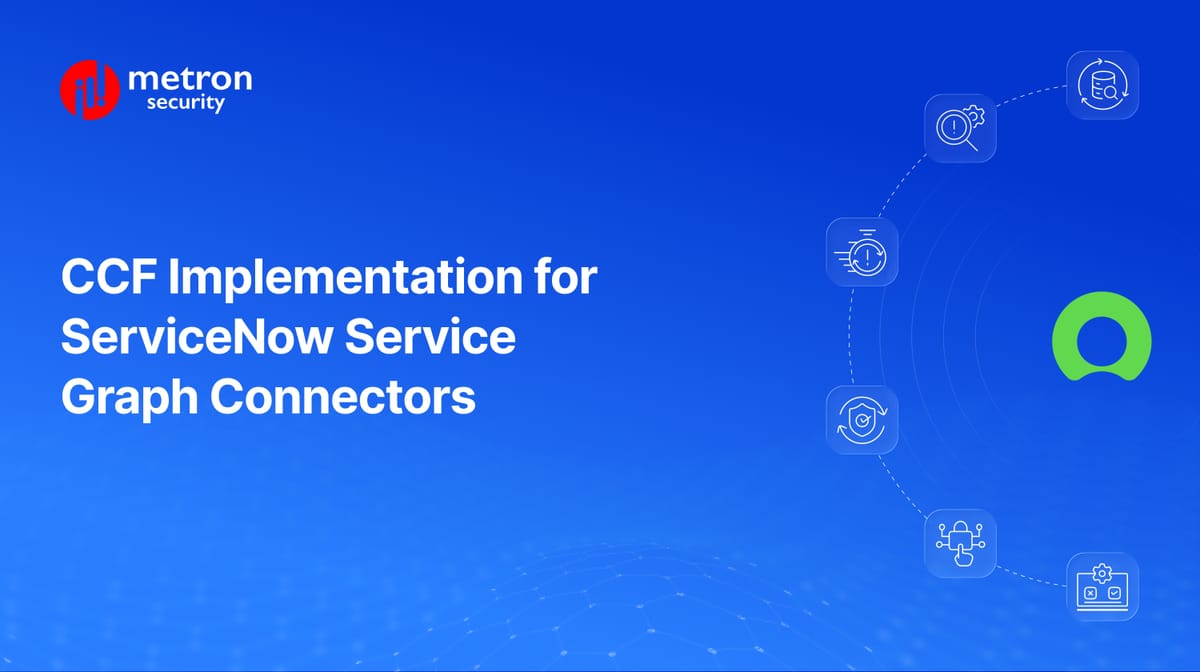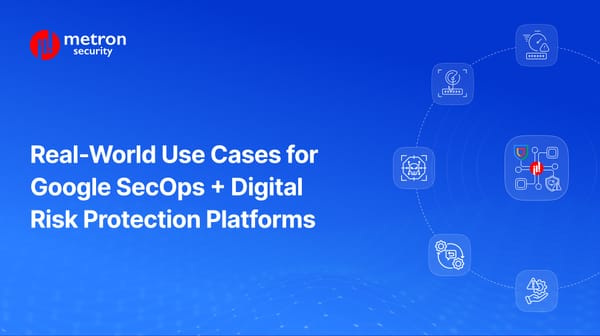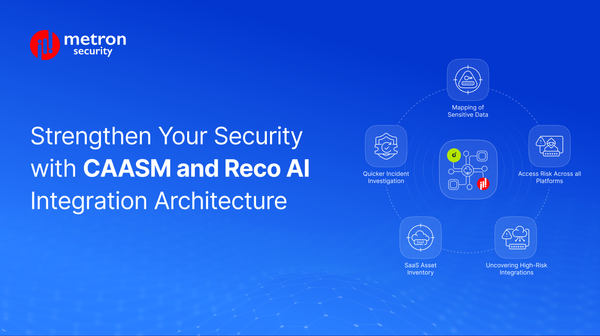CCF Implementation for ServiceNow Service Graph Connectors
Dive into the significance of CCF, its role in cybersecurity, and how you can smoothly implement it for your Service Graph Connectors.
Anmol Jain

ServiceNow's Common Connection Framework (CCF) revolutionizes how organizations manage their Service Graph connectors. Since its introduction with the Xanadu release, CCF has become a core requirement and remains fully supported and enhanced in the latest ServiceNow Yokohama release. To ensure smooth operations, compliance, and cutting-edge capabilities, understanding and implementing CCF on Xanadu is critical for any ServiceNow user.
This guide covers:
- What’s New in CCF?
- What is ServiceNow CCF?
- How CCF strengthens cybersecurity
- Overview of the updated CCF table structure
- Yokohama-aligned implementation steps
- Key benefits of CCF
- Leveraging Integration Commons and Service Graph Connector Central
What is ServiceNow CCF?
The Common Connection Framework (CCF) is a standardized framework that streamlines the management of Service Graph connections. It provides a centralized repository for storing connection details, properties, data sources, and scheduled imports.
CCF offers organizations:
- Enhanced visibility: CCF provides a comprehensive overview of all your connections in a single location.
- Simplified testing and debugging: CCF helps streamline troubleshooting with standardized testing procedures.
- Improved efficiency: CCF can also help optimize connection management processes and reduce manual efforts.
ServiceNow CCF: The Common Connection Framework
CCF standardizes connection management across all Service Graph connectors by centralizing connection details, properties, data sources, and import schedules in a single framework.
Benefits include:
- Consolidated connection visibility and management.
- Streamlined testing, debugging, and auditing.
- Enhanced compliance and security controls.
- Integration with Service Graph Connector Central for monitoring and analytics.
While primarily focused on connection management, CCF also contributes directly to cybersecurity by:
- Providing unified views for proactive anomaly and threat detection.
- Ensuring data consistency to minimize vulnerabilities.
- Supporting detailed audit logs and compliance reporting.
- Enabling fine-grained, role-based access control to sensitive integration data and endpoints.
Updated CCF Table Structure
Key CCF tables on Yokohama:
- sn_cmdb_int_util_service_graph_connection: Basic connection info (name, status, description).
- sn_cmdb_int_util_service_graph_connection_property: Auth credentials, URLs, and other properties.
- sn_cmdb_int_util_service_graph_connection_data_source: Configures data sources, including real-time sync.
- sn_cmdb_int_util_service_graph_connection_scheduled_data_import: Legacy and scheduled import configurations.
- sn_cmdb_int_util_service_graph_connection_test_script: Connection testing scripts for validation.
Yokohama-Aligned CCF Implementation Steps
Prerequisites
- ServiceNow Yokohama release (current supported platform)
- Integration Commons v2.12 or higher
- CCF v2.12 or higher
Implementation Guide
- Register Connection Records: Use the CCF connection table to record connection details with full attributes.
- Define Data Flows: Configure real-time event-driven and scheduled import data sources.
- Connector Code Updates: Replace legacy connection logic with CCF API calls, integrating with Connector Central.
- Develop Testing & Monitoring Scripts: Leverage built-in APIs and testing frameworks for connection health and anomaly detection.
- Extend Tables if Needed: Add custom fields and extend scripts, maintaining CCF integrity.
- Support Multiple Connections: Manage multiple connectors with distinct CCF records and coordination.
- Comprehensive Testing: Automated and manual validations using test scripts before rollout.
Key Benefits
1. Improved Data Integrity and Consistency
- Reduced Risk of Data Breaches: By centralizing connection information and standardizing data flows, CCF helps prevent inconsistencies and errors that could lead to data breaches.
- Enhanced Data Quality: CCF ensures that data is collected, processed, and stored in a consistent manner, improving data quality and reliability.
2. Enhanced Visibility and Risk Identification
- Proactive Threat Detection: A well-managed Service Graph, powered by CCF, provides a comprehensive view of your IT infrastructure, enabling you to identify potential vulnerabilities and security risks more easily.
- Early Detection of Anomalies: CCF can help detect anomalies in data flows or connection patterns, which could indicate a security breach or other issue.
3. Efficient Security Incident Response
- Faster Incident Investigation: In the event of a security incident, CCF can help streamline the investigation process by providing a centralized view of connection details and data flows.
- Improved Incident Containment: By understanding the scope and impact of a security incident, organizations can take more effective steps to contain it and minimize damage.
4. Compliance and Regulatory Adherence
- Simplified Auditing: CCF can help organizations comply with security regulations and industry standards by providing a centralized record of connection details and data flows.
- Improved Audit Efficiency: Centralized information makes it easier to conduct audits and demonstrate compliance with security requirements.
5. Enhanced Access Control and Governance
- Granular Access Controls: CCF can be used to implement granular access controls for different connections, ensuring that only authorized users have access to sensitive data.
- Improved Governance: By centralizing connection management, organizations can establish better governance practices and ensure that connections are used appropriately and securely.
6. Improved Testing and Debugging
- Standardized Testing Procedures: CCF provides a standard way to test connections, ensuring consistency and reliability.
- Quick Identification of Issues: The test connection feature allows you to quickly identify and troubleshoot problems with your connections, reducing downtime and improving overall system performance.
Leveraging Integration Commons for CMDB
- Integration Commons 2.12+: Enables advanced transformations, scripting, and standardization.
- Service Graph Connector Central: Central hub for connection monitoring, analytics, and troubleshooting.
- Unified dashboards: Offer live insight into errors, compliance status, and health metrics.
Conclusion
ServiceNow's CCF can be a critical component for effective Service Graph management and indirectly contributes to enhancing your organization's cybersecurity posture. However, implementing CCF can be a complex task involving multiple steps and technical expertise.
If you are a ServiceNow user, you need to implement CCF to make it compatible with the latest version release. ServiceNow Yokohoma and Metron's expertise can make it a seamless experience.
Is your organization looking to set up any integrations with Service Graph Connector or any other ServiceNow platform? Or having trouble connecting security apps with its infrastructure? For any queries or integration needs of your business, concerning cybersecurity platforms, please feel free to reach out to us at connect@metronlabs.com.









